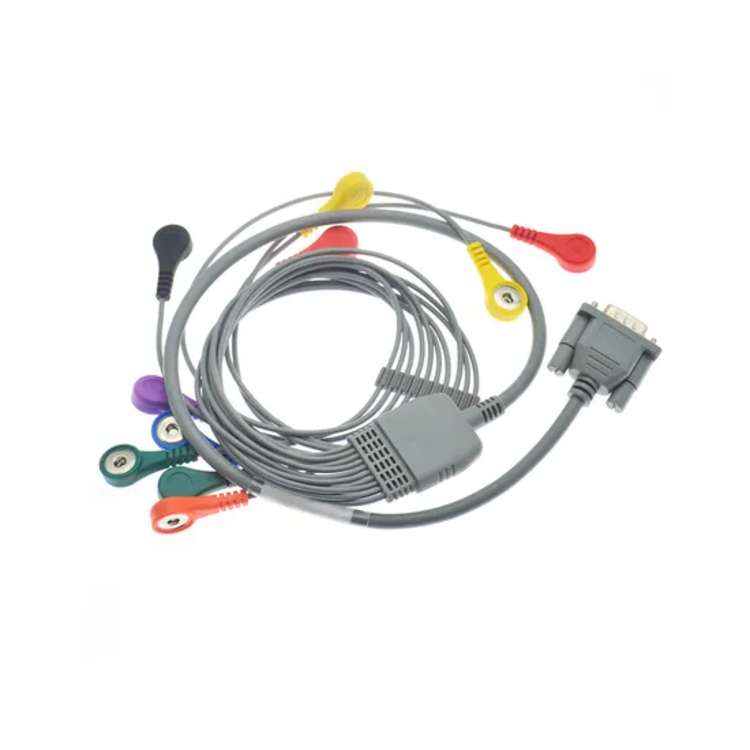The Advantages of Fiber Optics as a Replacement for Aviation CablesI...
Introduction
The aviation industry is undergoing a transformative shift as it seeks to optimize performance, reduce operational costs, and meet stringent environmental regulations. One of the most impactful innovations in this evolution is the adoption of fiber optic technology to replace traditional copper-based aviation cables. Fiber optics offers a compelling array of advantages, from dramatic weight savings to unparalleled data transmission capabilities.
1. Significant Weight Reduction and Fuel Efficiency
Copper cables contribute substantially to an aircraft’s weight, accounting for 3–5% of the total mass in commercial airliners. Fiber optic cables, however, are 70–90% lighter than their copper counterparts. For example:
Replacing copper wiring in a Boeing 787’s communication network reduces weight by approximately 1,500 kg, translating to a 2% annual reduction in fuel consumption per aircraft.
Lighter aircraft also generate fewer carbon emissions, aligning with global sustainability goals like the ICAO’s Carbon Offsetting and Reduction Scheme (CORSIA).
This weight-saving advantage is critical for next-generation aircraft, including electric and hybrid-electric models, where every kilogram impacts range and efficiency.
2. Immunity to Electromagnetic Interference (EMI)
Aviation environments are rife with electromagnetic noise from engines, radar, and onboard electronics. Copper cables are highly susceptible to EMI, which can degrade signal integrity and compromise critical systems like:

Fly-by-wire controls
Navigation and communication systems
Engine monitoring sensors
Fiber optics transmit data using light signals, which are inherently immune to EMI. This ensures reliable, noise-free performance in high-interference zones, such as near jet engines or during lightning strikes.
Case Study: The Airbus A350 XWB employs fiber optics in its avionics systems to maintain signal accuracy even in extreme electromagnetic conditions.
3. High Bandwidth and Ultra-Fast Data Transmission
Modern aircraft require real-time data processing for applications ranging from in-flight entertainment to advanced health monitoring systems. Fiber optics outshines copper by offering:
Bandwidth Capacity: Supports data rates exceeding 100 Gbps, compared to copper’s maximum of 10 Gbps.
Low Latency: Enables near-instantaneous communication between systems, essential for autonomous flight operations and AI-driven predictive maintenance.
This capability is revolutionizing onboard systems:
Passenger Connectivity: Seamless 4K/8K streaming and high-speed Wi-Fi for hundreds of passengers.
Sensor Networks: Real-time transmission of structural health data from thousands of sensors embedded in wings and engines.
4. Enhanced Safety and Reliability
Fiber optics eliminates risks associated with traditional copper wiring:
No Electrical Current: Optical cables carry light, not electricity, removing the risk of short circuits, sparks, or fire hazards.
Durability: Fiber optic cables are resistant to corrosion, temperature extremes (-40°C to 85°C), and vibration, ensuring longevity in harsh aviation environments.
Security: Fiber is extremely difficult to tap without detection, offering inherent protection against cyber-physical threats.
Example: The Lockheed Martin F-35 Lightning II uses fiber optics to secure mission-critical data links against tampering.
5. Simplified Maintenance and Cost Savings
While the upfront cost of fiber optic components is higher than copper, the long-term savings are substantial:
Reduced Downtime: Fiber’s reliability minimizes maintenance checks and in-service failures.
Lower Fuel Costs: Weight savings directly reduce fuel expenditure over an aircraft’s lifespan.
Future-Proofing: Fiber infrastructure easily scales to accommodate emerging technologies like quantum communication and AI-driven analytics.
Case Study: Emirates Airlines reported a 15% reduction in maintenance costs after integrating fiber optics into its in-flight entertainment and cabin management systems.
6. Environmental Sustainability
Fiber optics supports the aviation industry’s green transition:
Lower Carbon Footprint: Reduced fuel consumption cuts CO₂ and NOₓ emissions.
Recyclability: Glass-based fiber cables are more eco-friendly than copper, which requires energy-intensive mining and refining.
Challenges and Mitigation Strategies
While the advantages are clear, adoption barriers remain:
Initial Costs: High expenses for optical transceivers and connectors. Solution: Bulk purchasing and advancements in manufacturing (e.g., silicon photonics) are lowering prices.
Installation Expertise: Specialized training for technicians. Solution: Partnerships with firms like TE Connectivity to develop standardized fiber optic toolkits.
Certification: Regulatory frameworks are evolving. Solution: Collaborative R&D programs like Clean Sky 2 in Europe are accelerating certification processes.

